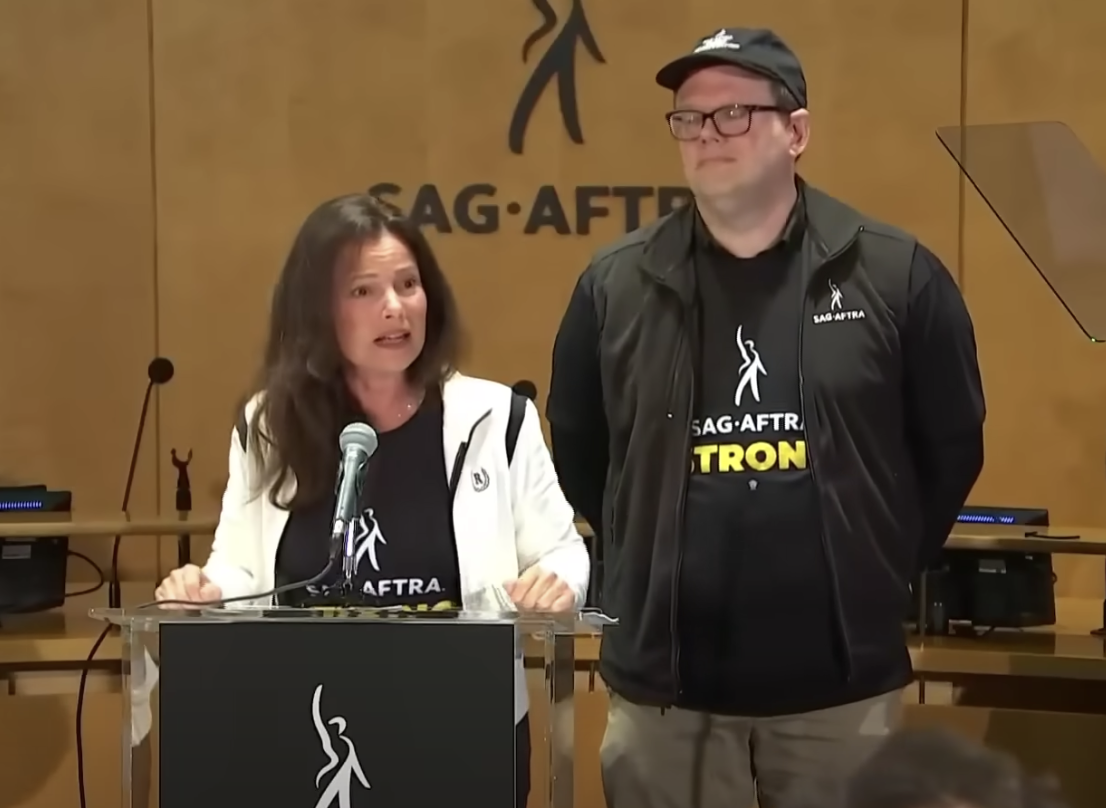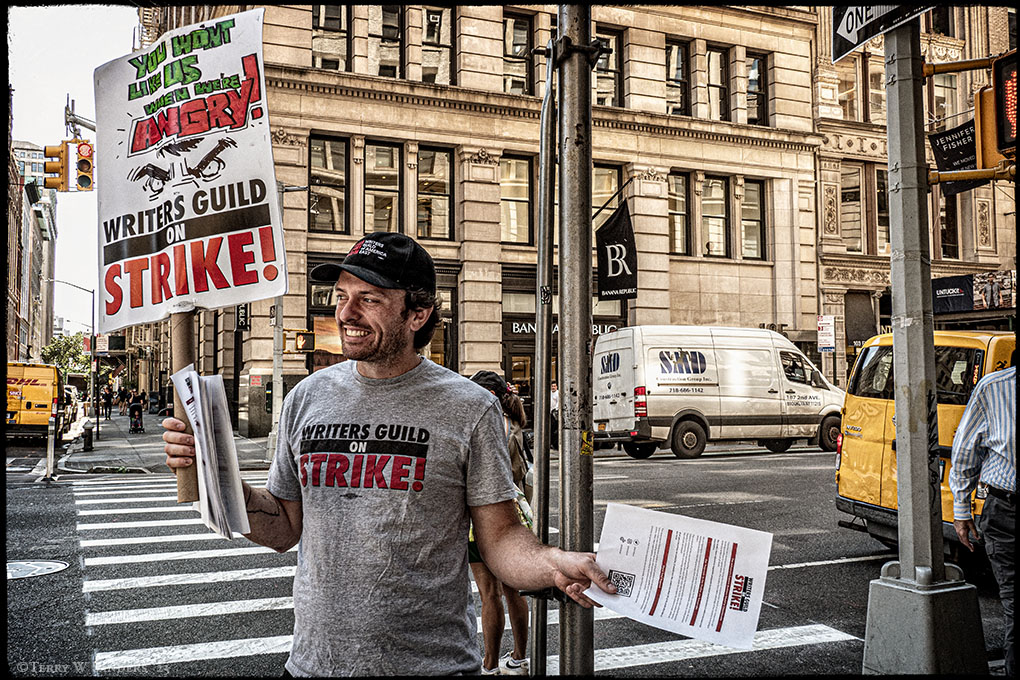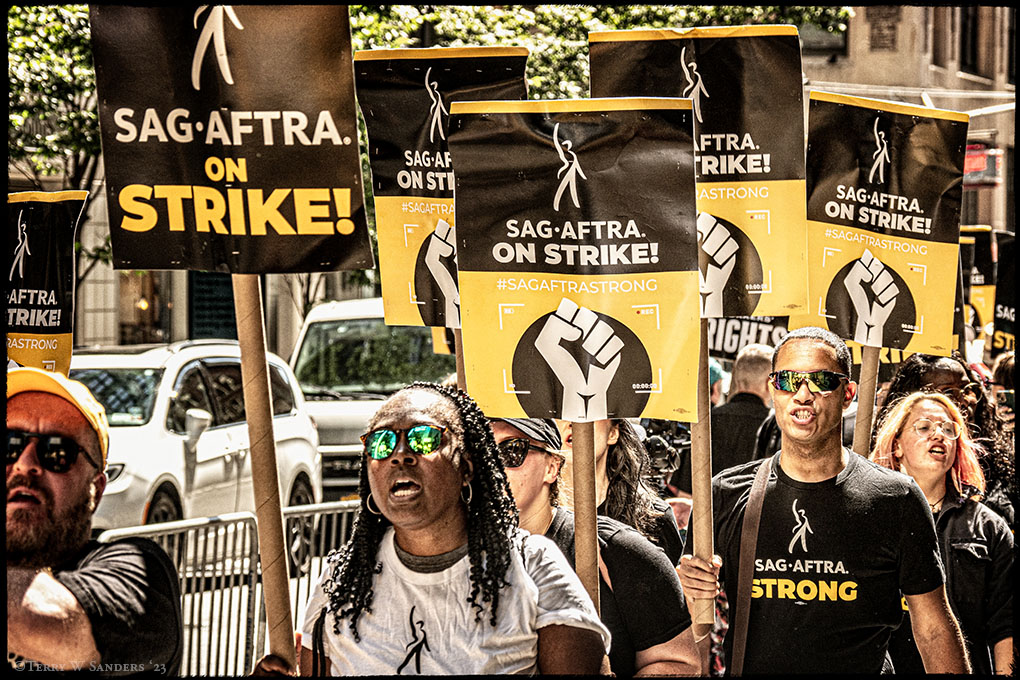“The AMPTP, through President Carol Lombardini, reached out to the WGA today and requested a meeting this Friday to discuss negotiations”. Last night, Ellen Stutzman, Writers Guild of America’s chief negotiator, sent this note to all its members to inform them that, after almost three months of strike, the Alliance of Motion Picture and Television Producers, which stands for the major Hollywood studios, was ready to start negotiations to resume contracts. But someone is missing from the roll call: 160,000 performers represented by Screen Actors Guild – American Federation of Television and Radio Artists (SAG-AFTRA) were left out, despite their willingness to negotiate.
It signaled a shift in strategy for Hollywood studios. According to The New York Times, the AMPTP was expected to contact the actors first, then the writers, in order to start rolling again on movies and shows that are past the writing stage. But this wasn’t the case. In fact, Duncan Crabtree-Ireland, SAG-AFTRA’s National Executive Director and Chief Negotiator, told Deadline that, “We have not heard from the AMPTP since July 12. We are ready, willing, and able to return to the table any time, because the only way strike comes to an end is through the parties talking”.
The Friday meeting between WGA and AMPTP is the first sign of movement since the strike began on May 2, when 11,500 screenwriters failed to reach an agreement with the Studios over their contracts, claiming that they were “finding their work devalued in every part of the business while company profits have remained high and spending on content has grown”(read WGA’s report here) due to the streaming transition that has changed the industry over the past years.

A little over two months later, on July 17, tens of thousands of SAG-AFTRA actors joined the protest demanding rules and guardrails around the use of Artificial Intelligence in TV and film, as well as higher pay rates and residuals for streaming content. Meanwhile, they are prohibited from having promotional interviews, posting on social media, and appearing on red carpets. As SAG-AFTRA President Fran Drescher said in a Today show interview: “We have financially prepared ourselves for the next six months. And we are really in it to win it”.
This was the first time both the performers and the writers’ unions aligned together against the AMPTP at the same time since the strike of 1960. At that time, it properly started on January 16, then the Screen Actors Guild joined in March, and it formally ended on June 12. The reasons were basically the same: both the 1960 and 2023 protests aim to ensure fair wages and proper representation of all actors and writers.
Some people were wondering why A-List stars hadn’t joined the strike yet. But they actually have. Some well-known actors – such as Rachel McAdams, Lupita Nyong’o, Colin Farrell, Jane Fonda, Awkwafina and Brendan Fraser, have been protesting in the streets. And some others, like Meryl Streep, George and Amal Clooney, Matt Damon, Leonardo DiCaprio, Hugh Jackman, Dwayne Johnson, Nicole Kidman, Julia Roberts, Arnold Schwarzenegger and Oprah Winfrey, Jennifer Lopez, Ben Affleck, Ryan Reynolds and Blake Lively, have made a $1 million donation each and helped fundraise more than $15 million, so far.
“It’s a call to arms for all of us”, said Dwayne Johnson when he reached out to SAG-AFTRA Foundation president Courtney B. Vance to take part in the protest.













